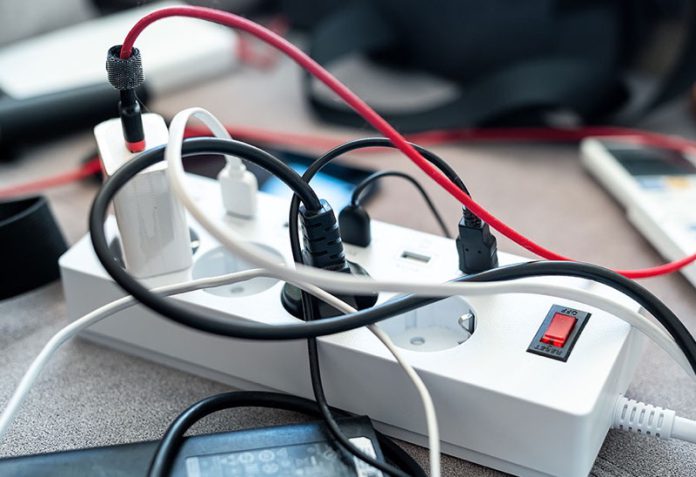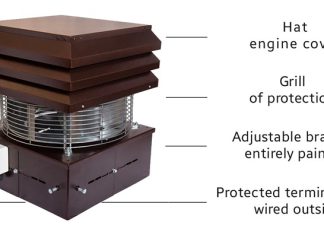Humans should not work with high voltage or other electrical hazards daily. Thus, working with electrical supplies can be dangerous, especially if you don’t have the right tools.
This is why using the proper safety equipment is vital.
If you need some safety tools, it is time to check out the items listed below to help you safely work with electricity, especially if you are an electrician, apprentice, or even someone who likes to tinker around with electrical equipment.
Arc Flash Protection
An arc flash occurs when electricity jumps from a conductor to another object, such as a person. These can cause severe burns, leading to amputations or even death.
Therefore, protecting yourself from arc flashes is crucial when working with electricity.
There are arc flash safety suits, hoods, and personal protective equipment that helps prevent injury from arcing or sparking. The entire set will usually include gloves, jackets, pants, and shoes with conductive carbon or Kevlar fibers.
These products conduct electricity away from your body when working with electrical supplies. They also protect you from burns if they come in contact with electrical current.
You can get them from your local hardware store or online from any website like Amazon.
Electro-Static Discharge Protection (ESD)
Electro-static discharge is the buildup of static electricity on a person or object, often causing small sparks.
The friction between two dissimilar materials like plastic and metal causes this, but it can also be caused by rubbing against clothing fabric.
ESD is a genuine concern when working with electronic components, as even small amounts of voltage can damage sensitive electronics.
Listed below are some tools to help you work safely:
ESD Mats
These mats contain a layer of insulating material that prevents static buildup in the air around you. They are available in different sizes and styles for home or office use.
ESD Gloves
These gloves are from conductive materials that allow you to safely handle sensitive electronics without fear of damaging them. They are available in different sizes and styles for home or office use.
Covers
Covers protect from ESD because they prevent objects from contacting each other directly and creating friction which causes static electricity buildup.
These covers come in many shapes and sizes to fit almost any size of things that need to be protected from ESD buildup while handling sensitive electronic components.
The most common covers are from conductive materials like leather, rubber, and neoprene.
Rubber Mats and Insulating Tools
When working in the garage or on a job site, you might work close to electrical equipment such as a power supply box or a light fixture. If you’re not careful, you could get shocked if you accidentally touch something electrified.
To prevent this from happening, you must have rubber mats and insulating tools that can help protect you.
Rubber Mats
Rubber mats are available in different sizes and thicknesses. They come with an adhesive backing to be attached directly to any surface, including concrete floors.
They are great for protecting against electrical shock because they’re made from rubber which doesn’t conduct electricity.
They’re also an effective way to insulate yourself from electrical current. This is particularly important when working with wet items like metal pipes or wires.
The best rubber mats for this purpose are thick and sturdy but lightweight enough to carry easily.
For example, the Rubbermaid Work Mate is a popular choice among electricians because it’s easy to clean, and you can use them on all surfaces without leaving marks or slipping off.
Insulating Tools
Insulating tools come in many different shapes and sizes, but they all do the same: they keep you safe from the live wires inside the cable or wire.
These include gloves, sleeves, and boots made from a non-conductive material such as rubber or plastic.
They help prevent you from getting shocked while working on electrical projects because they insulate your hands from the current running through wires or cables.
For example, if you are connecting two pieces of metal, like screwing a light bulb into a socket, you must combine them with a non-conductive material. This is because metal screws can cause sparks if they touch each other in a circuit.
By using an insulating tool, you can avoid this risk altogether. This will also reduce your chances of getting shocked by the electricity running through your hands.
Gloves
Gloves are a great way to protect your hands from shocks and burns. Three types of gloves are available for electricians: rubber, leather, and neoprene.
Each type of glove has its advantages and disadvantages, but all three offer some level of protection from electrical shock.
Rubber gloves are suitable for insulating your hands from shocks; however, they don’t last long if exposed to heat or chemicals like oil or grease because they can deteriorate the rubber material over time.
Leather gloves offer more excellent protection against cuts and abrasions than rubber gloves; however, they can be expensive because they often have to be replaced due to wear-and-tear caused by frequent use in the workplace.
Neoprene gloves are synthetic rubber resistant to heat and chemicals such as oils and greases; however, they’re not as durable as leather or rubber due to their flexibility when worn over extended periods.
Garments
When it comes to protecting yourself from electric shock, clothing is critical. You should always wear rubber-soled shoes, gloves, and leather-palmed gloves when working around electricity.
If possible, wear a pair of rubber boots as well – these will help protect your feet from any electricity that accidentally spills onto the floor.
Wear long sleeves and trousers so that no skin is exposed, and use safety goggles to protect your eyes from flying debris such as sparks or splashes from liquids like water or oil, which may spill onto hot surfaces during working hours.
Final Thoughts
Working safely with electricity is no joke. It has genuine hazards, and an ounce of prevention can be the difference between a safe project and a severe injury.
The right tools can make all the difference when working with electricity, primarily if you work with it regularly. It would be best if you always protect yourself from electrical hazards using proper protective equipment.















